The following is the inaugural installment of my new column in the News-Item, In Search of Old Shamokin. Find it monthly in the Lifestyle section.
I started researching this fascinating topic while writing my short feature film, “Jesse’s Diamonds,” inspired by the story of Jesse Major, John C. Boyd, and the founding of Shamokin. The film is currently in the casting phase. Find out more here.
Before Coal Was King
Jesse Major, John Boyd, and the Origins of Shamokin
In 1824, a notorious outlaw pays down the paltry sum of twelve dollars for a tract of land which will one day become the center of a prosperous city. The outlaw is Jesse Major, who ultimately sells his land for two hundred thirty dollars and a horse to a land speculator named John C. Boyd. The city? Shamokin, Pennsylvania.
The story of Jesse Major and the Shamokin tract, first recounted in written form by Dr. J. J. John in the 1876 History of Northumberland County, is one of the most memorable and ubiquitous stories of local history, and rightly so. While the founding date of Shamokin is often identified with the year of its incorporation as a borough in 1864, the town’s roots can be traced back forty years earlier to a pivotal time both in our region and in the country as a whole, when the age of the railroad—and of anthracite coal—was just beginning.
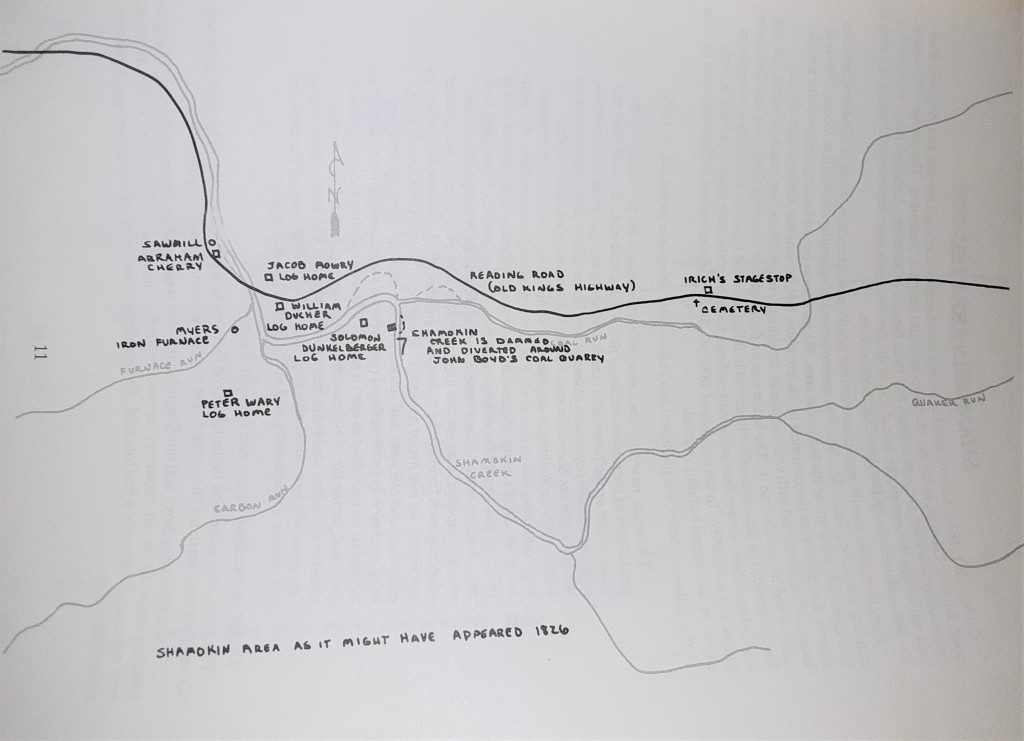
Credit: “A Matter of Style” by Kenneth Sandri
At this early period, the coal region was still in many ways a frontier, and could not boast of a connection even to such railroads as were being established in the 1820s, which ran horse-drawn cars before the introduction of the steam locomotive in the United States in 1829. Day-to-day travel was accomplished by stagecoach, and the closest major road to the Shamokin tract was the Centre Turnpike, along which small settlements, taverns, and inns cropped up in areas such as Paxinos and Bear Gap. Describing the Shamokin tract, Dr. John wrote:
“[T]he location was a dark and almost impenetrable swamp, thickly covered with pine, hemlock, laurel and rocks. It might at that time, with great propriety, have been called the ‘Shades of Death.’ A more dreary and forsaken spot could hardly have been found, and none but far-seeing businessmen would have ever thought of selecting the site for a town.”
Only a small portion of the land was cleared, where a log cabin occupied by the widow of William Ducher (or Dutcher) was located.
Anthracite, or “stone,” coal had been quarried occasionally at the site of Shamokin, but with little success. While anthracite was not unknown as a fuel, the remoteness of the central Pennsylvania coal fields made its transportation difficult and impractical. In 1825, the opening of the Schuylkill Canal improved the accessibility to major cities, but champions of anthracite coal still struggled to promote their black diamonds, in Pennsylvania and beyond its borders. One such proponent, William Cullen Bryant of Rhode Island, even published a poem dedicated to the undervalued fuel entitled “A Meditation on Rhode Island Coal.”
Dark anthracite! that reddenest on my hearth,
William Cullen Bryant, The New York Review, April 1826
Thou in those inland mines didst slumber long,
But now thou art come forth to move the earth,
And put to shame the men that mean thee wrong;
Thou shalt be coals of fire to those that hate thee
And warm the shins of all that under-rate thee.
The Shamokin tract purchased by Jesse Major consisted of approximately one hundred acres, originally part of the Samuel Clark survey. As Dr. John tells it, the tract eventually came into the possession of Walter Brady, one-time county sheriff and, so it is said, a gambling man. In order to settle Brady’s debts, the courts made several attempts to dispose of the property, but there were no takers until Jesse Major, a notorious horse thief, counterfeiter, and itinerant tailor, stepped up with his bid of twelve dollars at the public auction on August 19, 1824, to the amusement of everyone present. He had been recently released from jail at Fort Augusta, and it was assumed he had no money. But Major immediately paid down the sum in full—and in gold.
While it’s said that the famous twelve-dollar bid was made in jest, evidence suggests Major was not unaware of what he was buying. Census data indicates he was likely born and raised in the immediate area, and he was married to the daughter of Bernard Eyregood, an Irish Valley miller. We can assume Major was also acquainted with William Dutcher, the resident of the Shamokin log cabin, to whom county court records show Major was ordered to pay restitution in 1822 for an assault and battery.
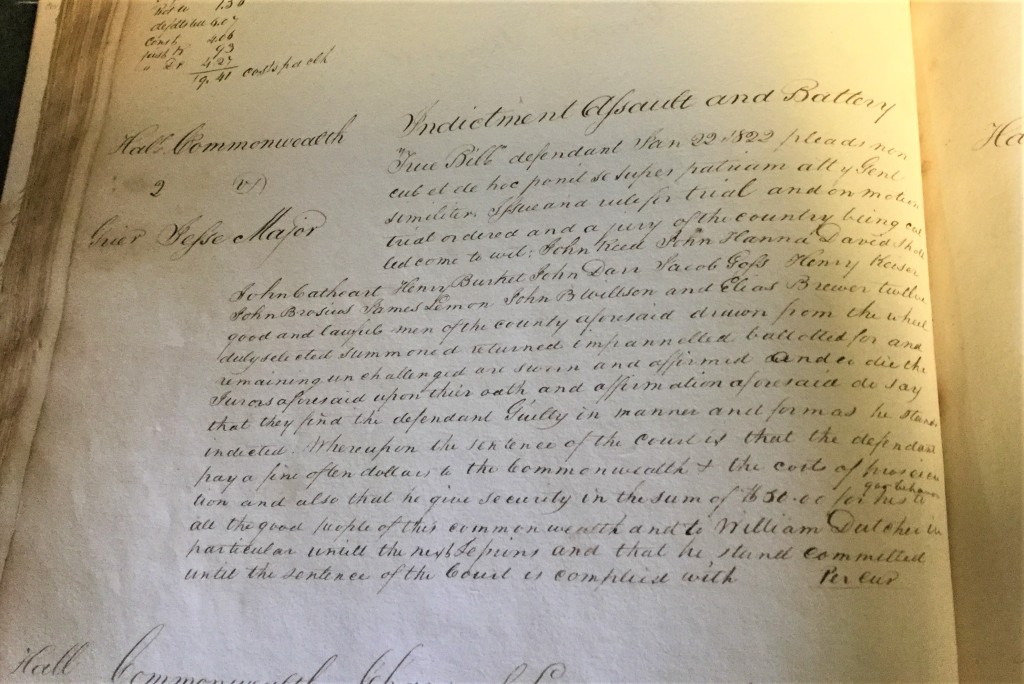
Major knew there was coal on his property, and was convinced of its value. Over the next two years, he traveled the county exhibiting mineral samples obtained from the tract to anyone who would pay attention. By the time the property was next sold, the deed contained a detailed description of the land which did not appear in the prior deed, suggesting Major was serious enough about his property to have ordered a complete survey. A local blacksmith, however, tested a sample of Major’s coal and pronounced it worthless. Unsuccessful in promoting his land, Major finally attempted to trade it for an old gray horse, and when that failed, was referred to John C. Boyd. They struck a deal, and, on May 1, 1826, Jesse Major sold the Shamokin tract for two hundred thirty dollars and a horse.
Boyd, the future founder of Shamokin, was a well-respected landowner and speculator, son-in-law of Daniel Montgomery for whom Danville was named. In 1826, Boyd served on the board of two newly chartered enterprises—the Shamokin Coal Company, and the Danville and Pottsville Railroad—and doubtless would have recognized the potential value of the Shamokin tract should it ever become connected with the railroad. Actual construction on the Danville and Pottsville, however, had a rocky beginning, and the line did not reach Shamokin until 1838. In the intervening years, Boyd portioned off some of the Shamokin tract and made a number of attempts to found a settlement before ultimately laying out the town lots in 1835. Thus John C. Boyd ushered the new town of Shamokin into the history books.
Jesse Major, on the other hand, all but disappeared to history following the sale of the Shamokin land. In 1831, he initiated legal proceedings in an attempt to inherit the property of a Mary Tombleson, whom he claimed was his mother. By the time Major’s wife, Ann, died two years later, Major was either out of town or unreachable, according to a newspaper clipping requesting her husband come forward to take out letters of administration. After this, no definite record has been found to shed light on the outlaw’s fate.
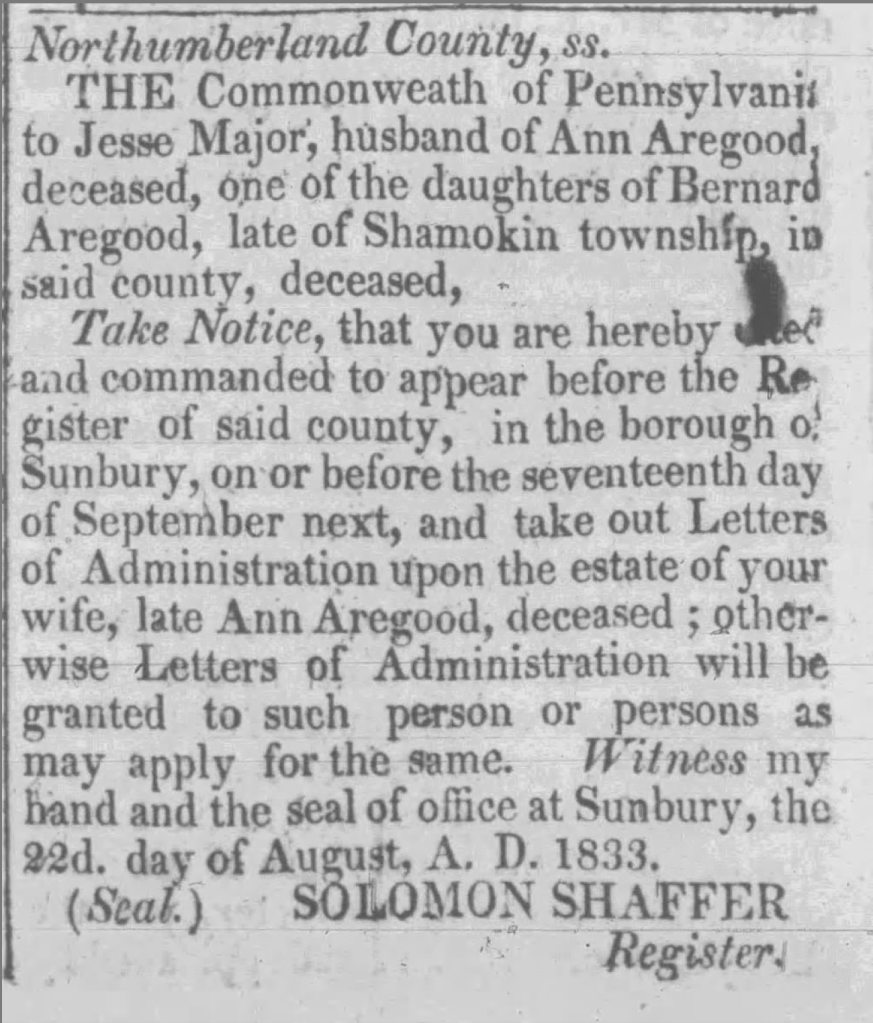
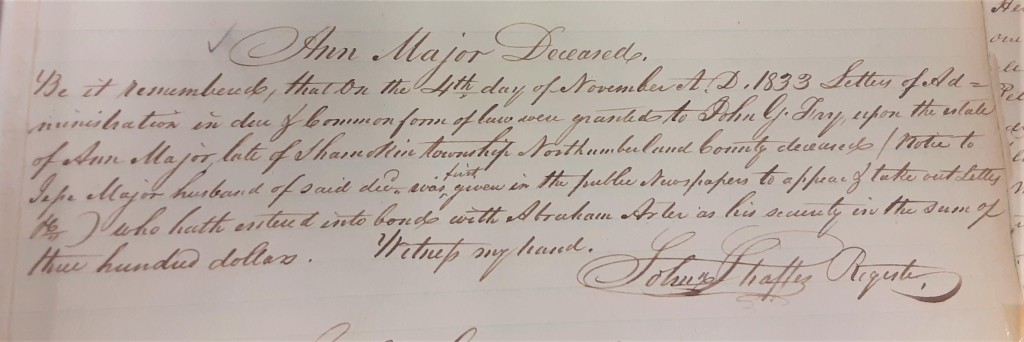
Today, of course, we know Shamokin’s stone coal wasn’t worthless. If Major had retained his property for another few years, long enough to see the arrival of the railroad, it is conceivable that Major himself might now be regarded as the founder of Shamokin. Either way, we can safely say that both Major and Boyd recognized the potential of a small plot of seemingly worthless land—a land which inspired the humble and the distinguished alike, and still inspires today.
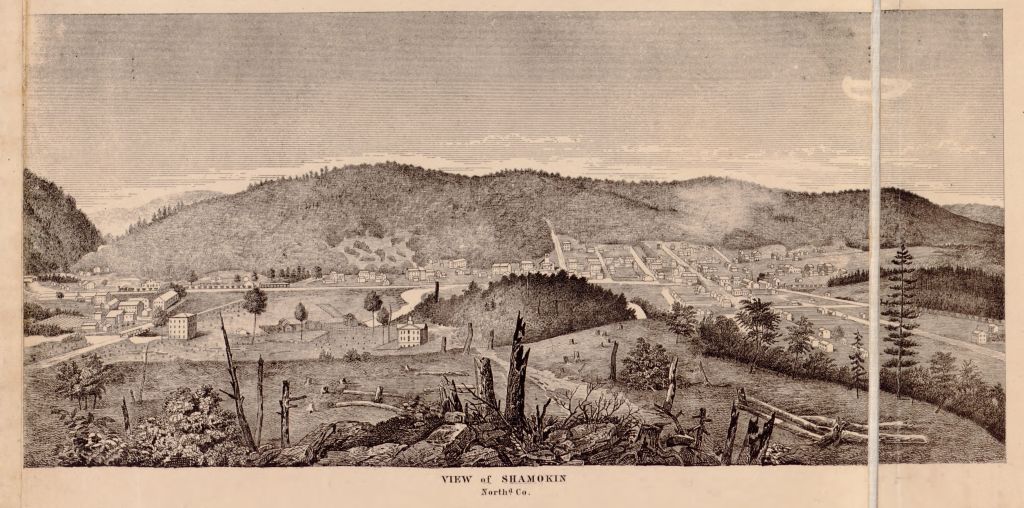
Source: 1858 Northumberland County Map 
Saddlery at Shamoken [sic] by James Fuller Queen, 1851
Source: Library of Congress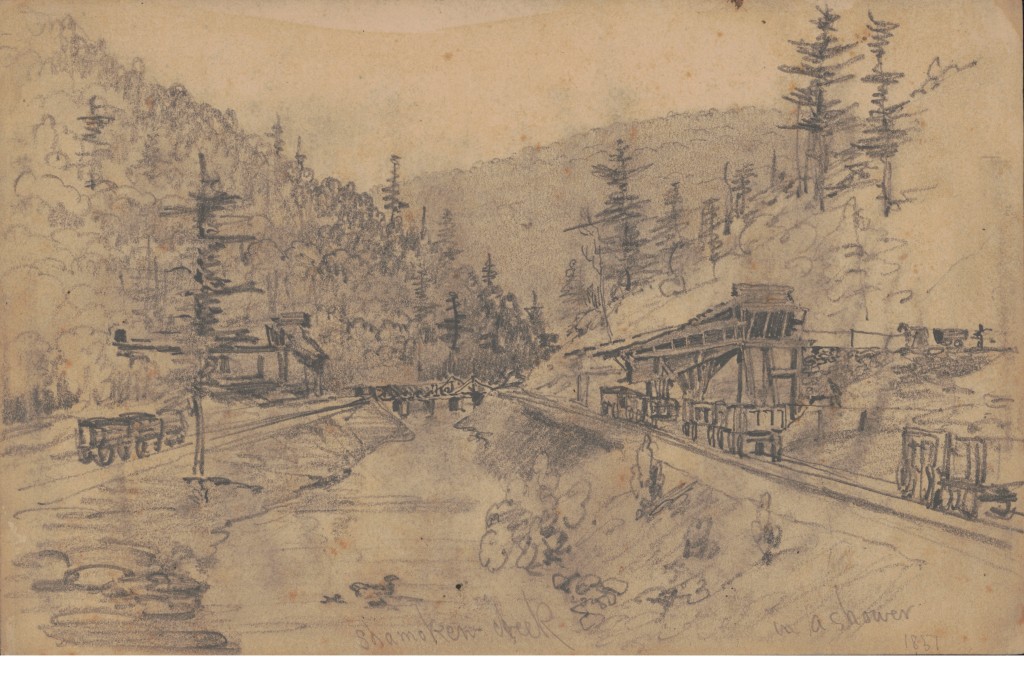
Shamokin Creek in a Shower, by James Fuller Queen, 1851
Source: Library of Congress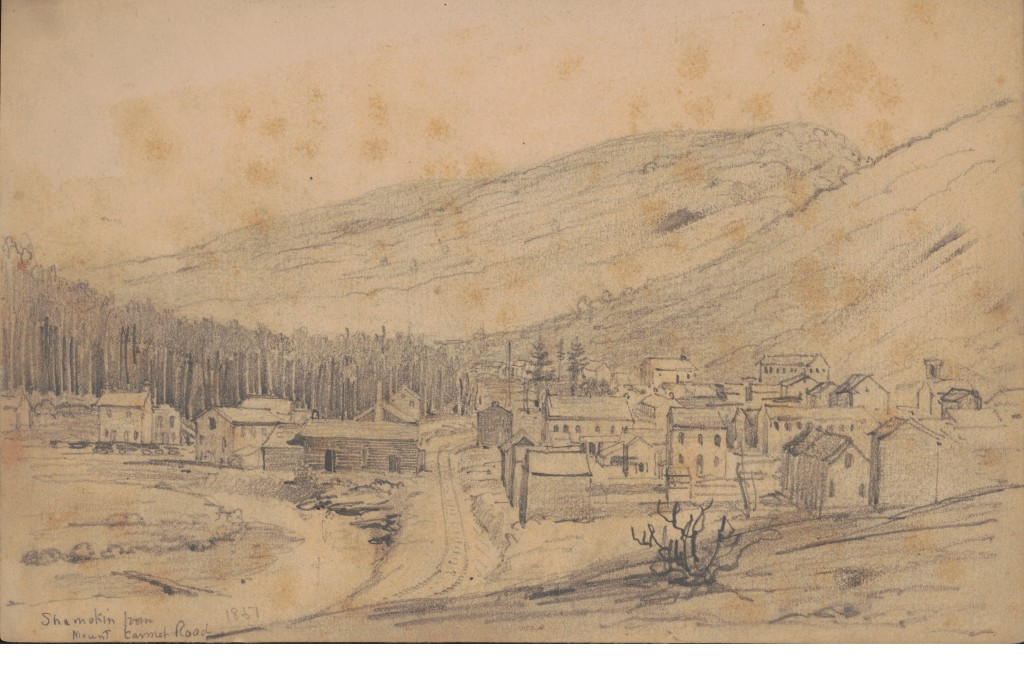
Shamokin From Mount Carmel Road by James Fuller Queen, 1851
Source: Library of Congress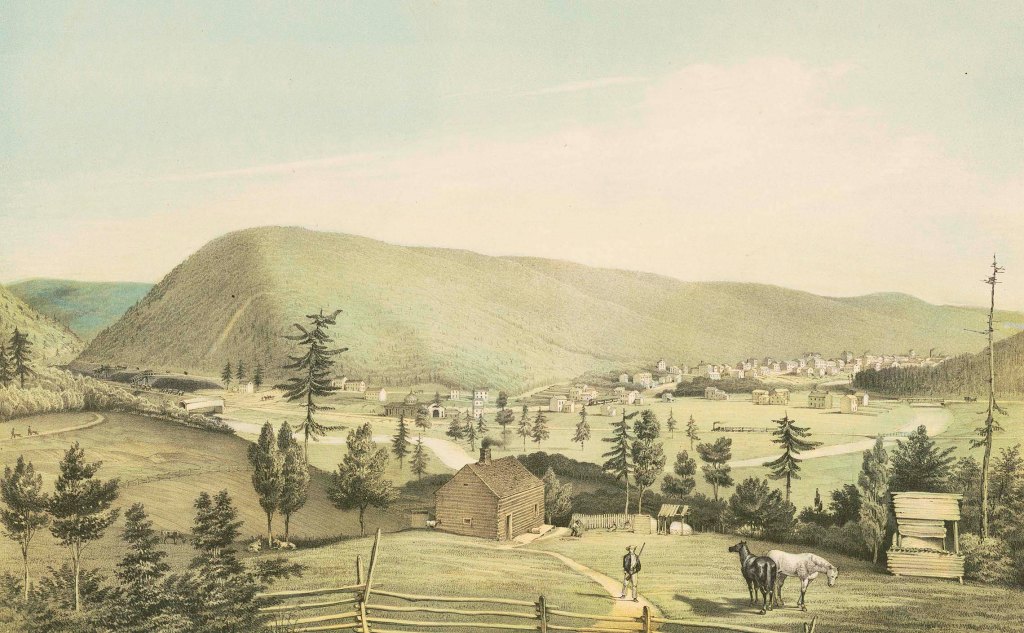
Shamokin, 1851, P.S. Duval & Co., lithograph probably the work of James Fuller Queen
Source: Library of Congress